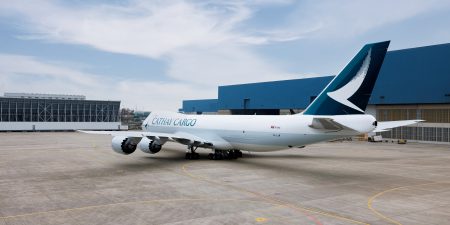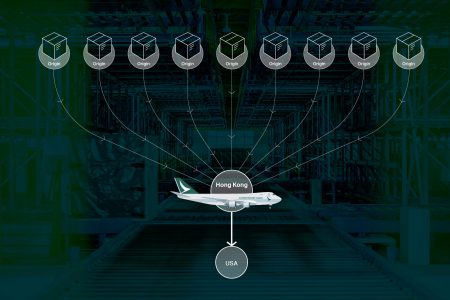One of the big issues of the past two years has been the availability of capacity, particularly on transpacific routes. Combined with that is the uncertainty in these pandemic times for cargo agents serving multiple origin ports – can they always fulfil capacity agreements for transpacific shipments at each origin?
Help is now at hand. Cathay Cargo has introduced a new business model, ‘Merge in Transit’ (MIT). This enables agents to have their cargo from multiple regional origins consolidated in Hong Kong, before having it delivered to their chosen long-haul destination in the form of an entire freighter charter or a guaranteed block space agreement (BSA) on a scheduled flight.
‘The MIT model means that we can merge the cargo from across Asia and the Subcontinent into one flight on a single BSA commitment to one final destination in North America,’ explains Martin Kwok, Cargo Global Partnerships Manager.
‘It means you can shuffle your tonnages from around the region and you only have to meet the overall commitment ex-Hong Kong,’ adds Frank Wu, Cargo Global Partnerships Manager.
Currently, MIT is available for origins in North Asia, South and South East Asia, and it has already been taken up by a select number of global agents, including Kintetsu World Express Inc (KWE) and EFL Global (formerly Expofreight)
EFL GLobal, which has increased its footprint in Asia, has multiple origins in the region. By consolidating their cargo in Hong Kong and by paying only a common rate ex-Hong Kong, they are able to sign a single contract with Cathay Pacific to fulfil an HBA (hard-block agreement ) on a flight from Hong Kong to the US, rather than separate contracts for each point of origin. The Cathay Pacific flights from each origin are included within the single contract price.
‘MIT gives us the flexibility to switch among origins and pre-plan the volumes based on each,’ says Irshad Razack, Global Head – Airfreight at EFL. ‘Swapping capacity within our South East Asian origins allows us to create additional capacity for origins with volume spikes at no extra cost.’



